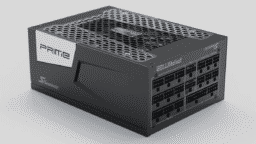When you look for buying a gaming laptop, you will need to pay close attention to its hardware components. One of the most important components of a gaming laptop is its graphics card. But buying a gaming laptop’s GPU is not an easy task as there is a lot more to consider, from the type of laptop you are using to the resolution of your display and more.
However, you can make this task easier. If you know your laptop requirement, budget, and needs, you don’t have to face difficulty in finding the right graphics card. To help you make the decision right, we have compiled a detailed GPU buying guide including types of graphics and important key features to look for when buying a graphics card.
AMD or Nvidia: Which GPU manufacturer to Choose?
Nowadays, the GPU market is dominated by two manufacturers, Nvidia and AMD. But which one you should buy for your gaming PC? It depends on your requirements and your budget.
If you’re running on a tight budget, then AMD is a better choice as they offer great value for your money in this range. AMD provides better value for low-end and mid-range gaming setups. The Radeon RX Vega 64, for example, is very fast and most powerful graphics card in AMD family, which is available under $500.

On the other hand, if you are looking for some serious QHD performance, then Nvidia should be your real choice. However, they come with a hefty price tag but they use more advanced technology overall. Nvidia graphic card generates less heat, consume less power and performs better at computing tasks.
For now, AMD’s Radeon RX-series graphics cards offer more bang for your buck at affordable prices. On the other hand, Nvidia is dominating the GPU’s market with high-end and powerful graphics cards.
Another important thing to look for is V-sync. As FreeSync is compatible with AMD and G-Sync is compatible with Nvidia, so you must ensure that your monitor is compatible with either of these technologies. These technologies will help with synchronizing the display with the attached graphics cards to reduce motion blur and elimination of ghosting. In the bottom line, AMD’s FreeSync is obviously the better choice than Nvidia’s G-Sync for those on a tighter budget.
Recommended for you: Advantages and Disadvantages of Laptops You Need to Know
Performance Comparison of Various Graphics Cards
There is no doubt in saying that the performance comes with a price, especially when you are going to buy a GPU. A mid-range GPU will enable you to play decent games at smooth frame rates. But a powerful graphics card will let you play most of the latest games at a higher resolution such as 4K gaming. These GPUs come with a hefty price tag but offer outstanding gaming performance. Below is the GPU performance table at various budgets.

| GPU’s | Class | Price Range | Performance |
|---|---|---|---|
| Nvidia GTX 1030, AMD Radeon RX 550 | Low-end | $75 – $90 | Best GPU for eSports gaming. Good for casual gamers. |
| Nvidia GTX 1050, Nvidia GTX 1050 Ti, AMD Radeon RX 560 | Budget GPUs | $100 – $200 | Best for 720p and 1080p gaming. |
| Nvidia GTX 1060, AMD Radeon RX 570, Nvidia GTX 1070, AMD Radeon RX 580 | Mid-range cards | $200 – $500 | Best for flawless gaming at 1080p and 1440p gaming. |
| Nvidia GTX 1070, GTX 1070 Max-Q, Radeon RX Vega 56, Nvidia GTX 1080, Nvidia GTX 1080 Ti, Nvidia RTX 2080 | High- end | $500 – $1500 | Great for 1440p resolution gaming and also compatible with VR headsets. |
| Nvidia RTX 2080 Ti, Nvidia Titan V | Premium | $1500 – $4000 | Best GPU for 4K gaming. |
For hardcore gamers, who aiming to play at a resolution of 3840×2160, then Nvidia RTX 2080 Ti is the only real choice. The laptops supporting 4K gaming can be found in an average range of $2,700 to $3,600.
Things to Consider When Buying a Graphics Card

As discussed earlier, there are many manufacturers like Gigabyte, ASUS, Zotac, MSI, EVGA and more dominating the GPU’s market. All these graphics cards are powered by either Nvidia or AMD GPUs.
However, all of them are different in terms of memory capacity, type & speed, components quality and more. Knowing all these terms can help you buying the right graphics card for you. Here’re some specifications you should consider when looking for a graphics card.
1. Compatibility
 Compatibility is a common problem with most graphics cards. You have to make sure that your motherboard and case will work together, also find out how much physical space your case can offer.
Compatibility is a common problem with most graphics cards. You have to make sure that your motherboard and case will work together, also find out how much physical space your case can offer.
There are other compatibility issues that can arise with graphics cards and one of them is the power supply. How many amps does it supply on +12v rail? Under load, how much power does it consume? How many 6-pin and 8-pin connectors does it have? You’ll also need to figure out whether the power supply has more than the minimum recommended wattage or not, otherwise, you’ll have to upgrade it later.
Apart from these two things, you should also check the ports. Make sure that the graphics card you want to buy has connectors you’ll need for your monitors.
2. Memory & Bandwidth
 It is said that higher is the space of graphics card memory, the better the performance. But, that’s not always true. If you’re using 720p or 1080p resolution monitors then the quantity of RAM won’t make much difference. Usually, a graphics card with 2 GB to 12 GB of RAM. It means you have to choose the graphics card with a minimum of 2 GB of RAM for optimal performance. However, most of the high-end GPUs come with high memory by default.
It is said that higher is the space of graphics card memory, the better the performance. But, that’s not always true. If you’re using 720p or 1080p resolution monitors then the quantity of RAM won’t make much difference. Usually, a graphics card with 2 GB to 12 GB of RAM. It means you have to choose the graphics card with a minimum of 2 GB of RAM for optimal performance. However, most of the high-end GPUs come with high memory by default.
The other utmost important thing to consider is bandwidth. It is the amount of memory a GPU is able to access at any given time. More is the bandwidth, the faster the GPU can access information and display it on the screen.
From GDDR3 and GDDR5 memory, we recommend you choose GDDR5 because it offers twice the bandwidth of GDDR3 which improves the performance.
3. Cooling System
 When the graphics card work, it generates a considerable amount of heat, that’s why there is a great need for a cooling system. GPU coolers are of two types – reference and non-reference coolers. Reference cards are made by GPU manufacturer Nvidia or AMD and sell them directly to consumers and also to some companies who modified them to sell their own version of cards.
When the graphics card work, it generates a considerable amount of heat, that’s why there is a great need for a cooling system. GPU coolers are of two types – reference and non-reference coolers. Reference cards are made by GPU manufacturer Nvidia or AMD and sell them directly to consumers and also to some companies who modified them to sell their own version of cards.
On the other hand, non-reference cards are made by partner companies that take Nvidia’s or AMD’s GPU and create a custom design graphic card. The most modified aspect is the cooling system. Reference cards generally have only one fan that pulls heat out from the computer.
The non-reference cards feature one to three fans and also contain additional cooling elements like heatsinks and pipes that blow hot air out from the hardware. While choosing between them, you should know the monitor the temperature of your CPU.
4. Power Supply
 Apart from considering the above-mentioned things, you’ll also need to think about whether your power supply has enough 6-pin and 8-pin connectors for your graphics card. If not then don’t worry you can buy a decent power supply of at least 80 plus bronze.
Apart from considering the above-mentioned things, you’ll also need to think about whether your power supply has enough 6-pin and 8-pin connectors for your graphics card. If not then don’t worry you can buy a decent power supply of at least 80 plus bronze.
A mid-range GPU like GTX 1060 requires 6-pin connectors whereas high-end GPU like GTX 1080 Ti two 8-pin connectors. You can find this information on both the power supply and graphics card’s spreadsheet.
5. Resolution on your screen
 When looking for a graphics card, it is also important to know what resolution you’ll be playing games at. If you are aiming to play at 4k resolution, you’ve to move in the range of high-end GPU like GeForce GTX 1080. Because the higher the resolution, the more pixel it will need to be rendered on each frame.
When looking for a graphics card, it is also important to know what resolution you’ll be playing games at. If you are aiming to play at 4k resolution, you’ve to move in the range of high-end GPU like GeForce GTX 1080. Because the higher the resolution, the more pixel it will need to be rendered on each frame.
On the other hand, if you’re aiming to play games at 1080p resolution, you can save some money by choosing a less-expensive graphics card. For this, graphics cards like GTX 1060 or GTX 1060 Max-Q are great and can deliver gaming at high frame rates on newer games without any lagging issue.
You may also like: Top 10 High-End Laptops for Graphics and Designing.
Final Words

Investing in the right GPU not only allows you to enjoy an immersive gaming experience but make your PC capable to handle graphic intensive work without any issues. After reading this article, you may have got the idea of how to buy the right graphics card for your computer.
We hope this buying guide will help you to find the right GPU for your needs. So, before buying anything for your PC, make sure you’ve checked the features very carefully. If you have any queries or suggestions about this guide, feel free to share it in the comment section below.
This article is written by Kanti Kashyap from BestLaptopNinja.com. She is a blogger and tech enthusiast who loves to write about the latest technology, gadgets, and their reviews. She has been in this field as long as she can remember. Follow her on LinkedIn.






